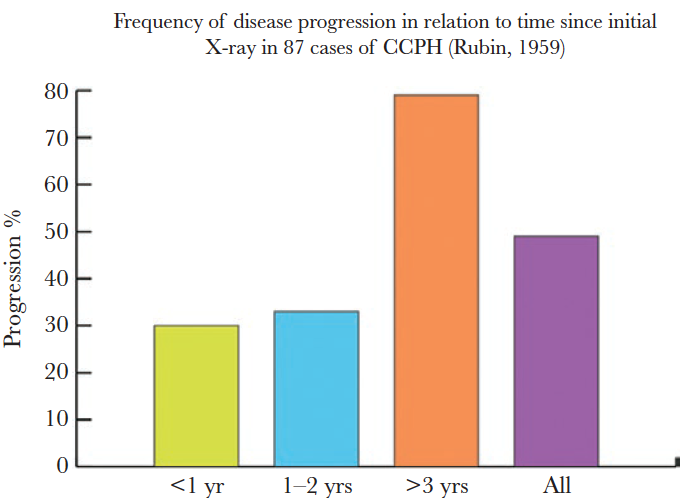First described in in 1948 and acknowledged as a separate clinical entity in 1953, many patients with chronic pulmonary histoplasmosis (CPH) languished in US tuberculosis sanatoriums, until picked out in the 1950’s. In one sanatorium in Missouri, 7.2% of ‘TB patients’ actually had CPH.

In a review just published in Open Forum Infectious Diseases, Jacob Baker et al, the current knowledge about CPH is summarized as follows:
- Older reports emphasized chronic cavitary pulmonary histoplasmosis, whereas in the last 2 decades Histoplasma nodules dominate diagnosed cases in the USA.
- Emphysema is the main risk factor for the cavitary form of CPH.
- Diagnosis relies on a high index of suspicion, use of fungal culture of respiratory samples, antibody testing and a compatible radiological appearance. Morbidity from CPH results from slow progression of cavities and gradual loss of lung function.
- This disease has barely been described outside the USA, but is likely to have a global distribution, with some features similar to chronic pulmonary aspergillosis.
- Access and performance of Histoplasma antibody testing needs addressing.
- Itraconazole is the treatment of choice and recommended for 12 months or longer, in the absence of prospective studies.
Baker J, Kosmidis C, Rozaliyani A, Wahyuningsih R, Denning DW. Chronic pulmonary histoplasmosis – a scoping literature review. Open Forum Infect Dis 2020 In press.